Known as ‘foiade’ in the local dialect, this homemade chestnut pasta is a type of maltagliati from Lombardy, particularly the valleys of Bergamo province. Traditionally, foiade contain different types of flour and are cut into various shapes. In this recipe, I used a mix of chestnut flour and semolina flour. I dressed the pasta with a sauce of dried porcini, fresh cremini mushrooms and cream. The result? A fabulous chestnut maltagliati recipe that’s easy to make and full of fall flavors!
What is maltagliati’
In Italian, maltagliati means badly cut! You can find types of maltagliati all over Italy. In some cases, they use a local name for the pasta such as cresc’tajat from Marche. Maltagliati pasta was originally common in the kitchens of the peasants and is part of what Italians call ‘La Cucina Povera’ the poor kitchen.
This pasta originated as a way to use up leftovers, often leftover pasta dough cuts but also leftover flour. The above mentioned cresc’tajat from Marche were originally made from leftover polenta. However, nowadays, they make this type of maltagliati with corn flour. Foiade were created as a way to use up leftover flour. That is why you can find this pasta containing more than one type of flour.
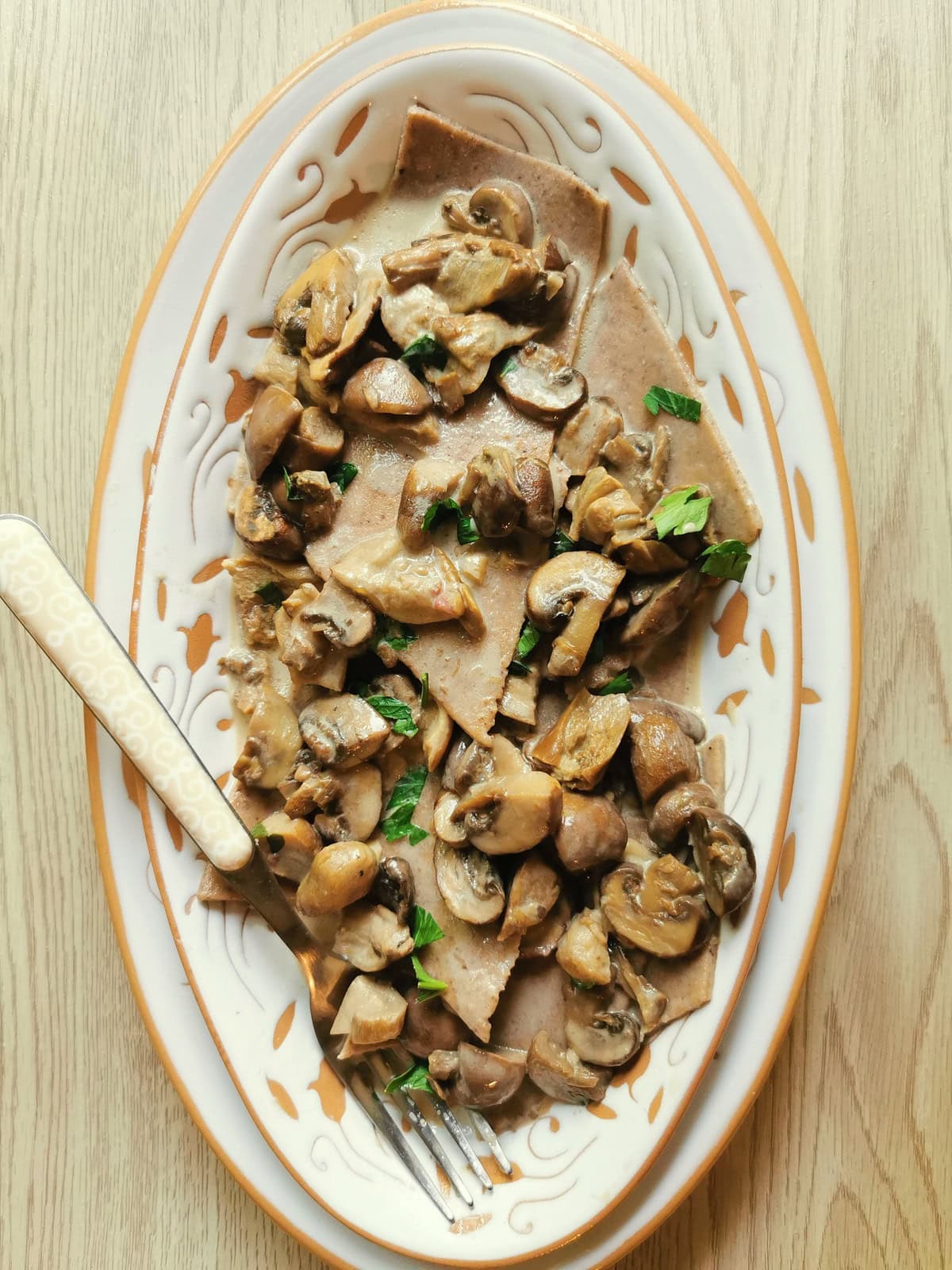

Maltagliati are nearly always flat pieces of pasta dough roughly cut into a particular shape and size. The pasta can be square, rectangular, triangular and rhomboid. I cut the chestnut pasta in this recipe into rhomboids. But, Italians also make square or rectangular foiade. The important thing is to make your maltagliati more or less the same size so all the pasta cooks at the same time.
In English speaking countries, homemade maltagliati are sometimes referred to as ‘pasta rags’. Some pasta makers also make dried maltagliati. However, the dried version is a lot more uniform in size and shape than the homemade one, so not really ‘badly cut’!


History and origin of foiade.
As I wrote in the introduction, foiade is a type of maltagliati pasta from Lombardy. You can also find it called foiade bergamasche because this pasta is typical of Bergamo city and province. Like other types of maltagliati, foiade is made with a combination of various flours and cut into different shapes.
Although this pasta started as a ‘poor’ dish, today you are more likely to find it on the table during holidays or on restaurant menus, particularly in the mountain valleys, for example the Brembana Valley, the Taleggio Valley, and the Imagna Valley, as well as others.


Ingredients for this chestnut pasta with mushrooms.
For the chestnut pasta dough.
The chestnut flour: Chestnut flour adds a slightly sweet and nutty flavour to the pasta, which pairs beautifully with the mushroom sauce. It’s also a fantastic source of dietary fibre with 12g fibre per 100g (3.5oz) of chestnut flour! If you aren’t able to find chestnut flour you can replace it with soft wheat flour or even make your own.
The semolina flour: Because chestnut flour doesn’t usually contain gluten, I use hard wheat semolina flour which is high in gluten. This helps the pasta keep it’s shape and consistency during cooking.
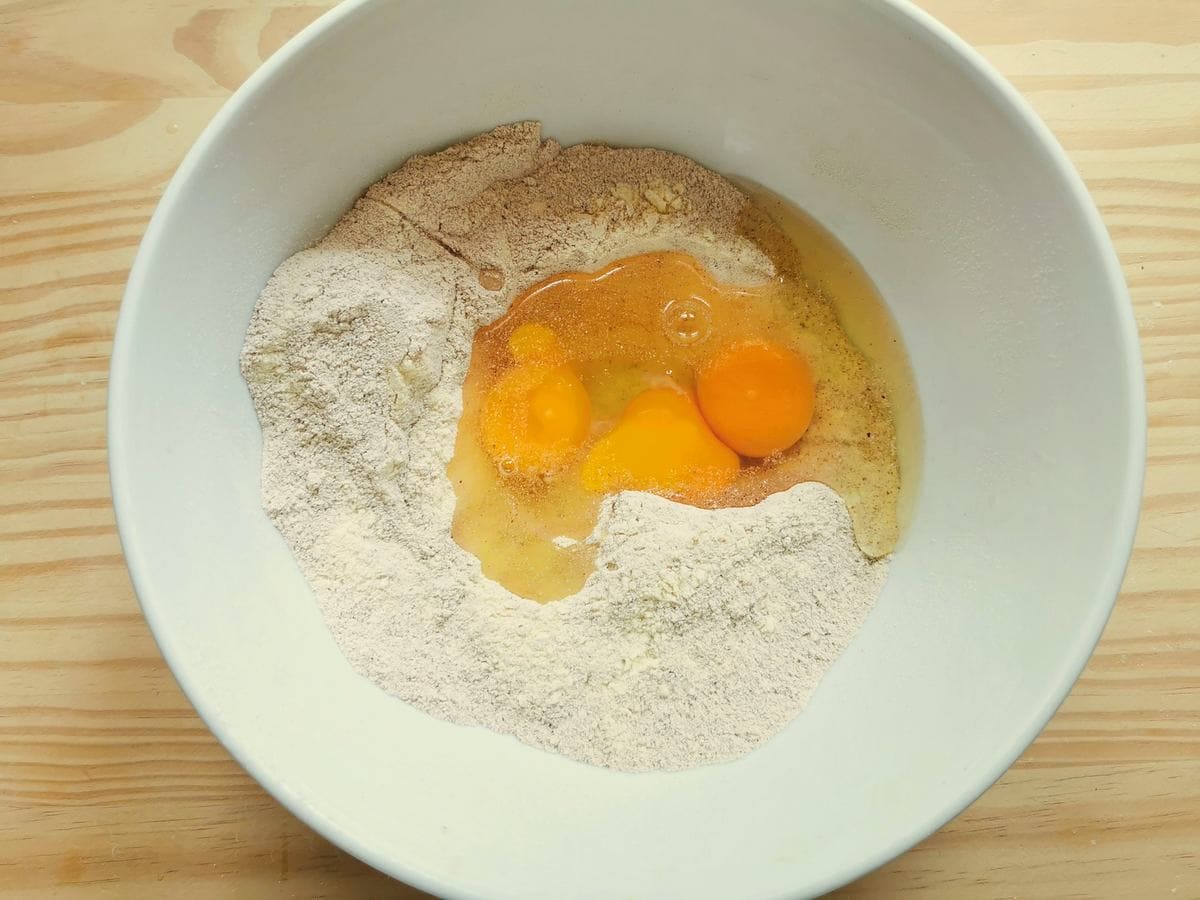

The eggs: You can find foiade containing one egg per 100g (3.5oz) of flour as is traditional for other types of egg pasta like tagliatelle etc. However, some people use less eggs and add water instead. For example, with 300g of flour use 2 eggs and approx. 30ml (1floz) of water or as much as you need. In the past, using less eggs was a way poorer families could save eggs.
Salt and olive oil: Nearly all Italian pasta dough recipes contain salt and most recipes for foiade include a tablespoon of olive oil. Adding olive oil to pasta dough makes the dough more elastic. It also enriches the flavor of the pasta and makes it more fragrant!
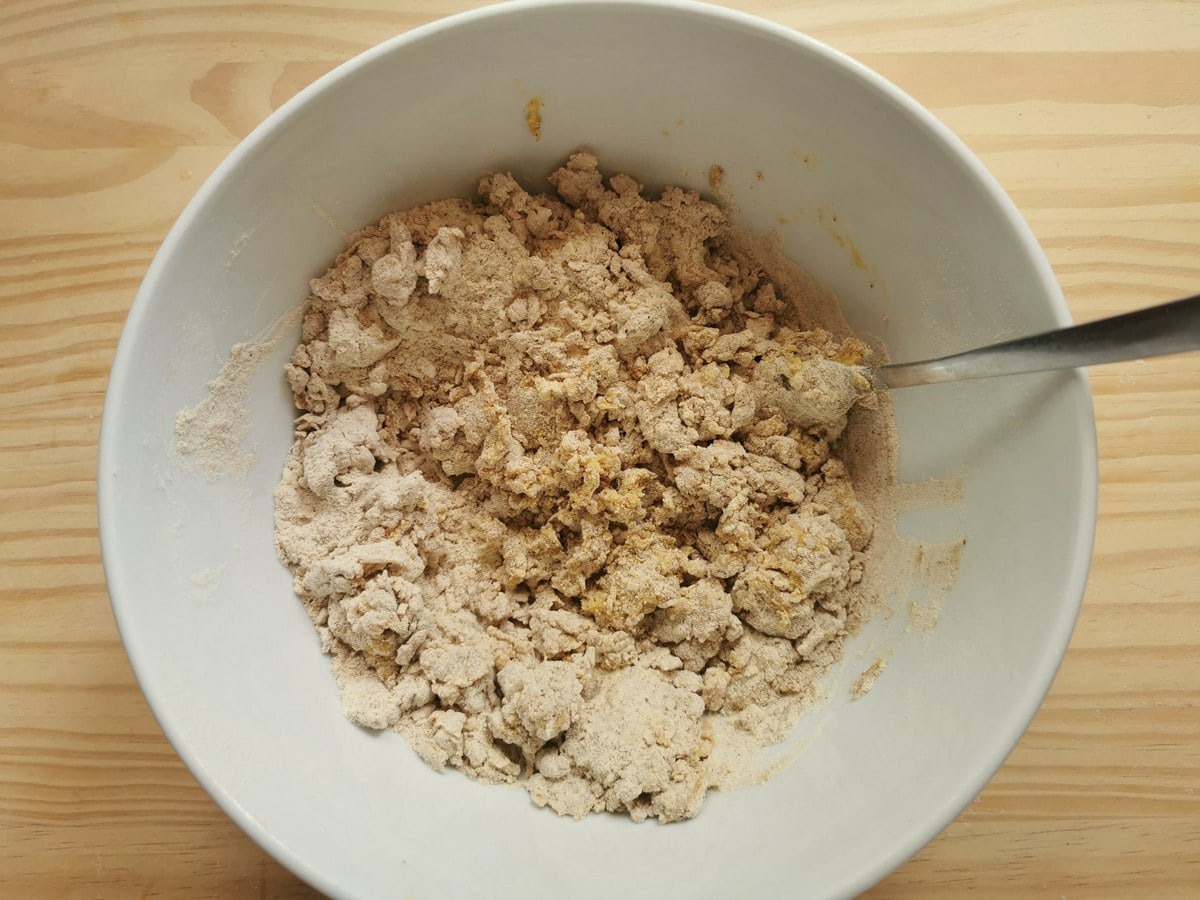

For the creamy mushroom sauce.
The porcini mushrooms (ceps): Traditionally, this chestnut maltagliati pasta is made with fresh foraged porcini mushrooms which grow in the woods of the mountain valleys in the spring and the late summer/early autumn (fall). Fresh porcini aren’t easy to come by. So, I used some frozen porcini with a few dried porcini. The latter need to be soaked in warm water before adding to the sauce.
The cremini mushrooms: Since dried and frozen porcini are expensive and have a very strong flavor, I added cremini for some mushroom ‘meatiness’ and their milder flavor. You can also use other types of champignons (button mushrooms or portobello mushrooms).
Garlic: Finely chopped garlic gives the mushroom sauce a robust base flavor. Garlic and mushrooms are always a delicious combo. Make sure to use fresh garlic over pre-minced for the best flavor!
Parsley: Use fresh not dried parsley to give the mushroom sauce not only color but also a fresh, herbal flavor that balances the richness of the mushrooms and garlic.
Fresh cream: You can use fresh single cream or heavy cream in this mushroom maltagilati recipe. Fresh cream requires longer cooking to reduce. Here in Italy, we often use long life ‘panna da cucina’ which is sold in small cartons and is a type of heavy cream.
Step by step instructions.
Make the pasta dough.
Sift both types of flour into a large bowl. Add the eggs, salt and olive oil.
Use a fork to beat the eggs and then incorporate them into the flour. Once everything is well mixed together, knead the dough in the bowl until you can form a ‘ball’ that no longer sticks to the sides of the bowl.


Turn the dough out onto a flour dusted work surface and knead until it is slightly soft and elastic. Roll the dough into a ball. Wrap it in clingfilm (plastic wrap) and let it rest for 30 minutes.


Make the mushroom sauce.
Soak the dried porcini in warm water for at least 30 minutes. In the meantime, clean and cut the other mushrooms into quarters, peel and chop the garlic and wash and chop the parsley.


Sauté the cremini mushrooms in a mix of heated olive oil and melted butter until they start to reduce and brown slightly. Drain the soaked porcini, chop them into smaller pieces and add them and the frozen porcini to the other mushrooms, along with the garlic and fresh parsley.
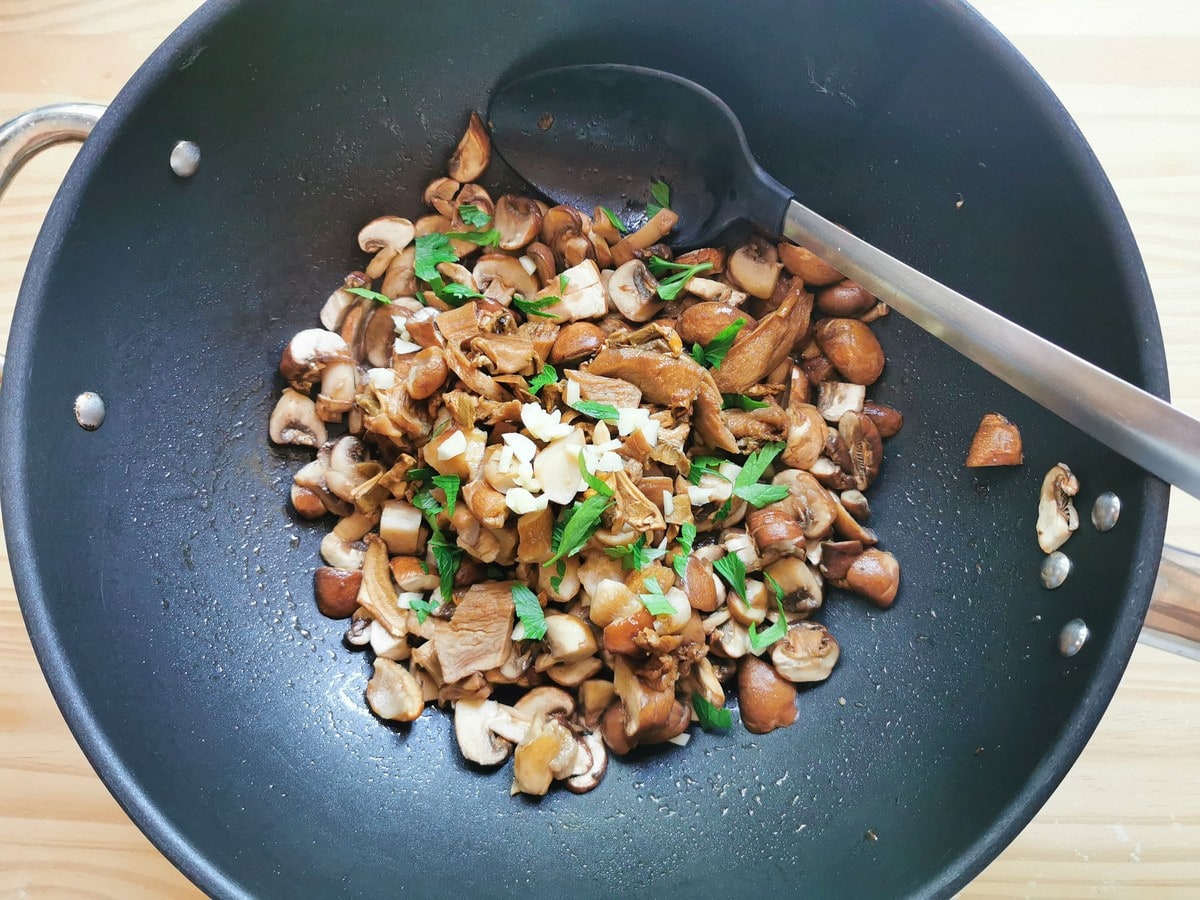

Once the mushrooms are beginning to caramelize, add the cream. Continue to cook until the cream has reduced and thickened.
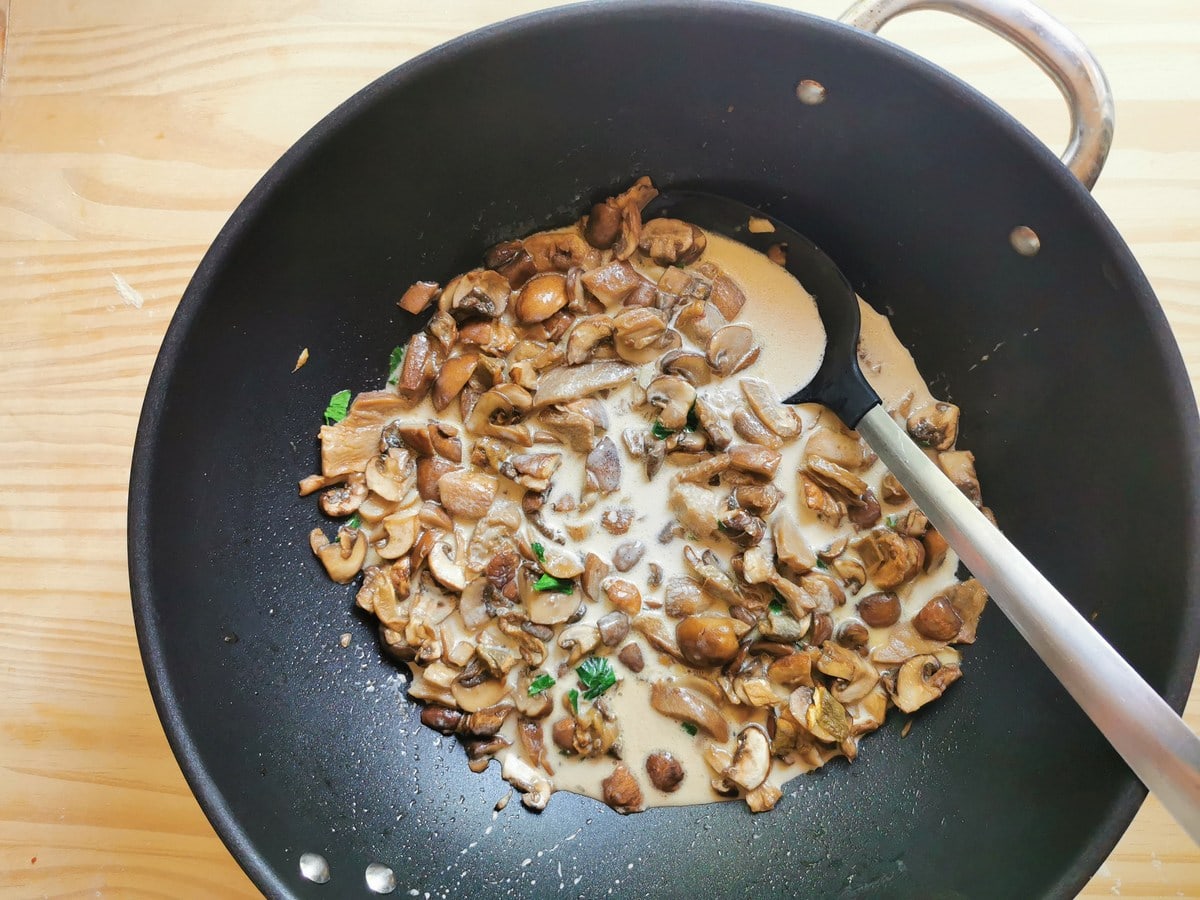

Make the chestnut maltagliati (foiade).
Cut off about one third of the pasta dough and rewrap the rest so it doesn’t dry out. Flatten the piece of dough with a rolling pin and pass it through your pasta machine to make a rectangular sheet.
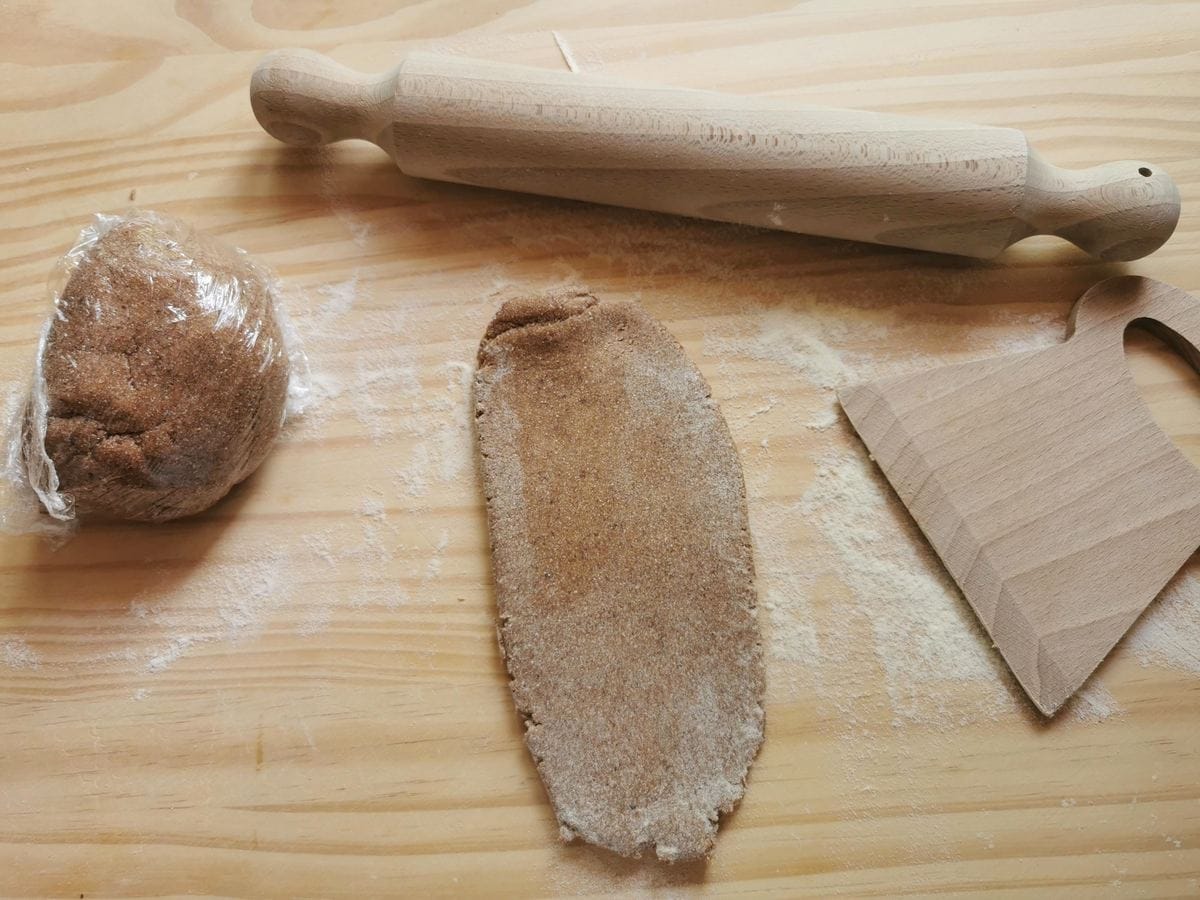

You don’t want it to be too thin. I used my widest setting which is 7 (in some machines it’s 1) about 3 times, folding the sheet into thirds after the first two times. I then passed it through the next 2 settings (6 and 5). You can also just use a rolling pin.


Cut the ready sheet of chestnut pasta dough into rhomboids (or squares) that are about 5-6 cm wide (about 2ins).


Place the ready maltagliati (foiade) on a flour dusted tray and repeat with the rest of the dough.


Finish and serve.
Put a pot of water on to boil for the pasta. Add salt once it starts to boil and bring to a boil again. Add the chestnut pasta to the boiling water and cook until al dente. Test taste before draining. Remove the pasta from the water using a slotted spoon and add it to the mushroom sauce. I cooked my pasta in two batches to prevent crowding the pan.


Over a low heat, gently mix the pasta and mushroom sauce together. Serve with more fresh parsley and grated cheese if required. Vegetarians should use a vegetarian cheese NOT Italian Grana or Parmigiano which are made with animal rennet.
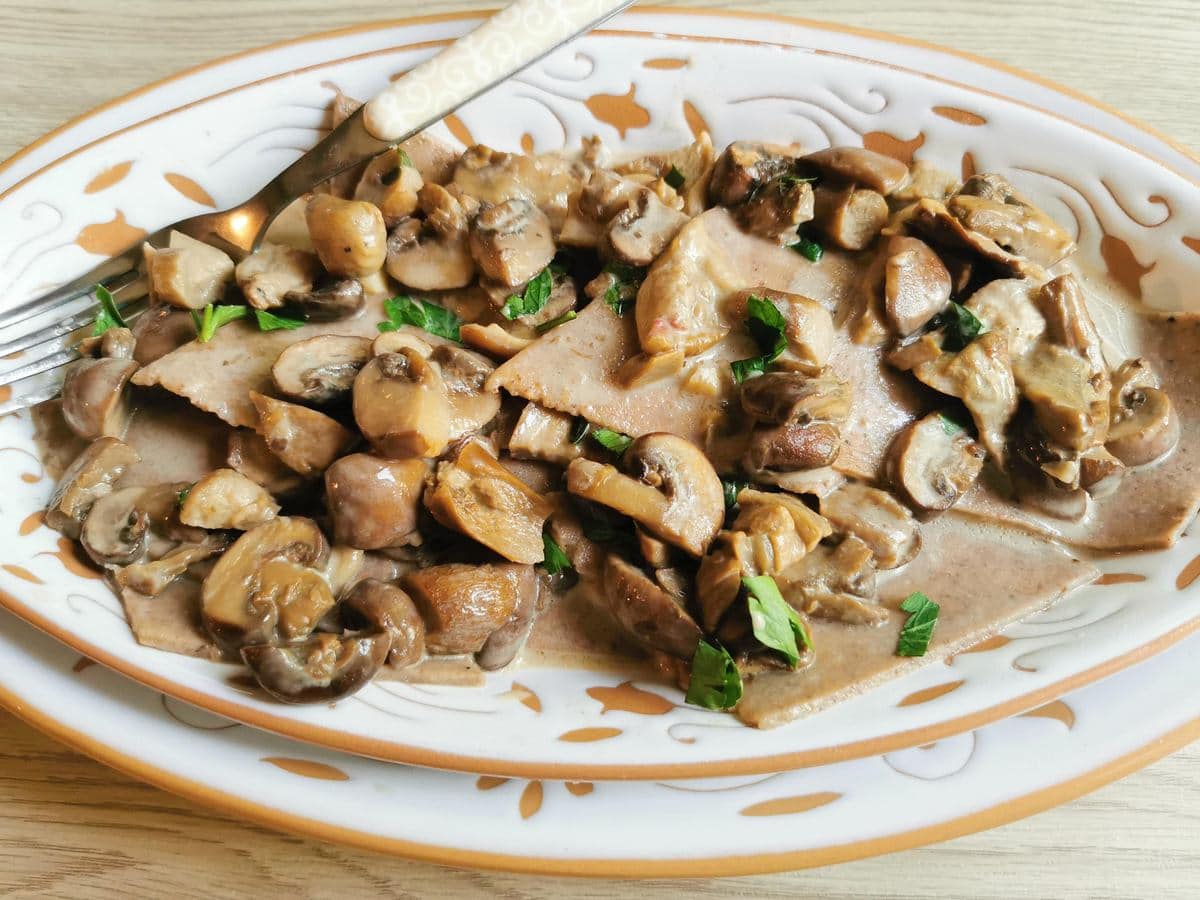

What to do with leftovers.
If you have leftover fresh pasta, you can freeze it for another time. Just place a tray with the chestnut maltagliati in the freezer and transfer to a freezer bag once the pasta is frozen. Cook from frozen when you want to make this recipe again.
If you have leftover pasta mixed with the sauce, you can bake the chestnut maltagliati with mushroom sauce in the oven with some cheese grated on top or you can reheat the leftovers in the microwave.
Pin for later.
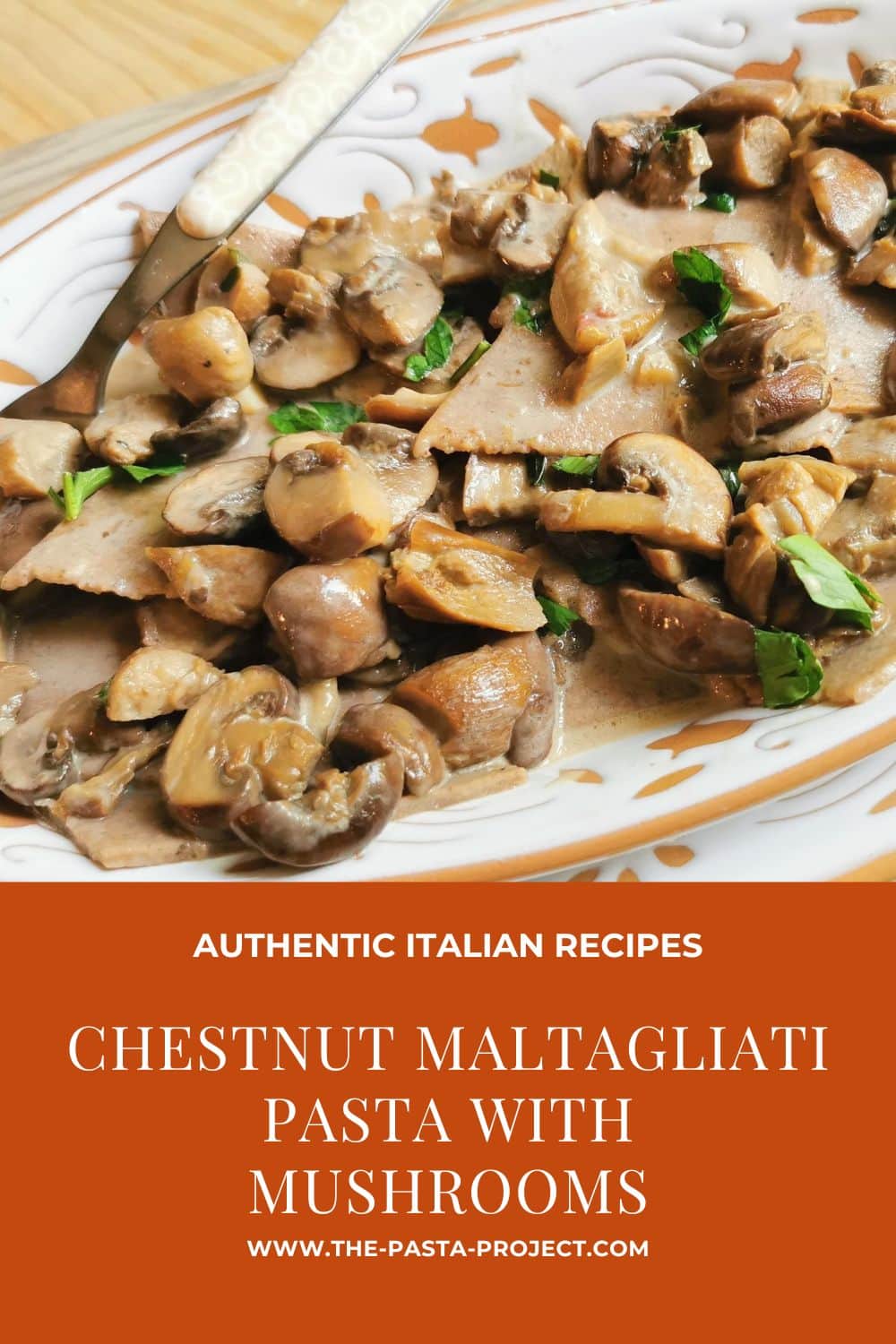

Let me know what you think.
In my opinion, this is not only one of the easiest homemade pasta recipes to make but the combination of chestnut flour pasta and mushrooms makes for a dish that’s full of the best fall flavors. Outstandingly delicious!
If you do try this chestnut pasta recipe, I’d love to hear what you think. Please write a comment here on the blog or post a comment on the Pasta Project Facebook page.
Your feedback means a lot to me!
Buon Appetito!
More maltagliati recipes to try.
- Pasta with mascarpone from Lombardy.
- Maltagliati with sausage from Marche.
- Pasta with veal and onions from Sicily
- Corn flour pasta with pancetta from Abruzzo
- Pasta with chicken livers and porcini from Marche.
If you are interested in buying some traditional pasta making tools check out my shop page (affliate links). Plus while you’re there, why not order a copy of one of my pasta recipe cookbooks? They make great prezzies for pasta lovers!
Reader Interactions

